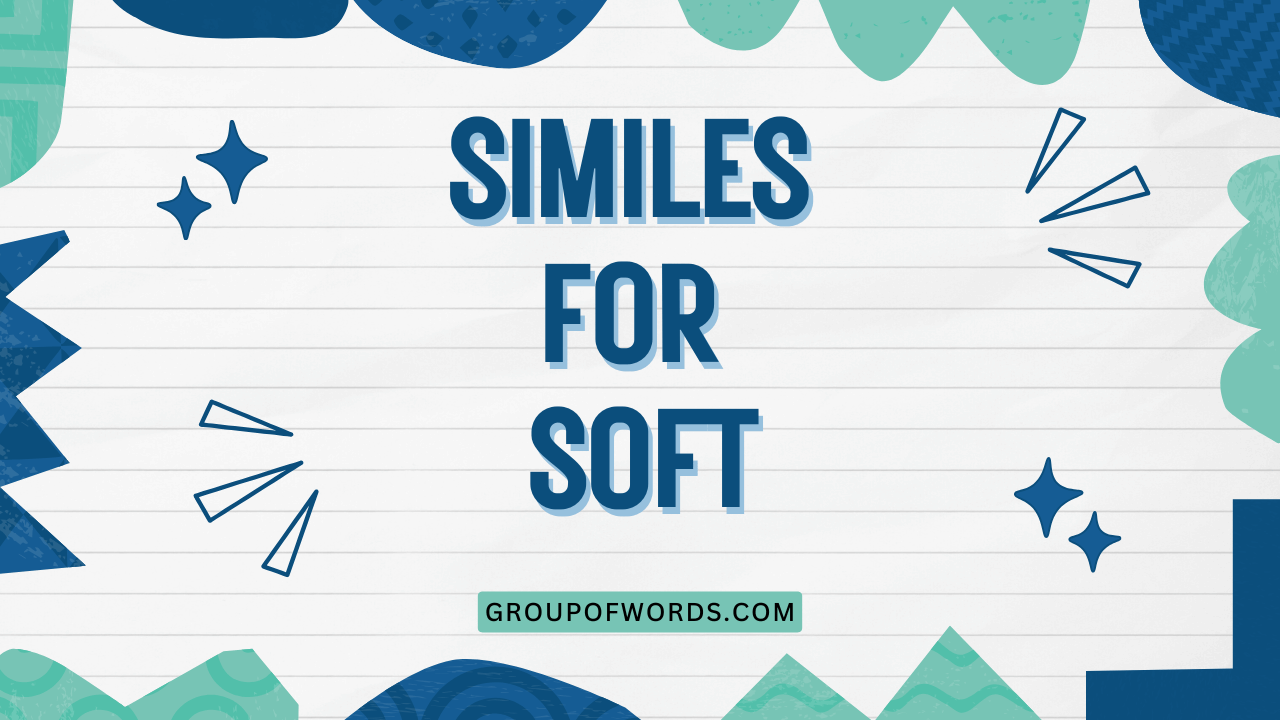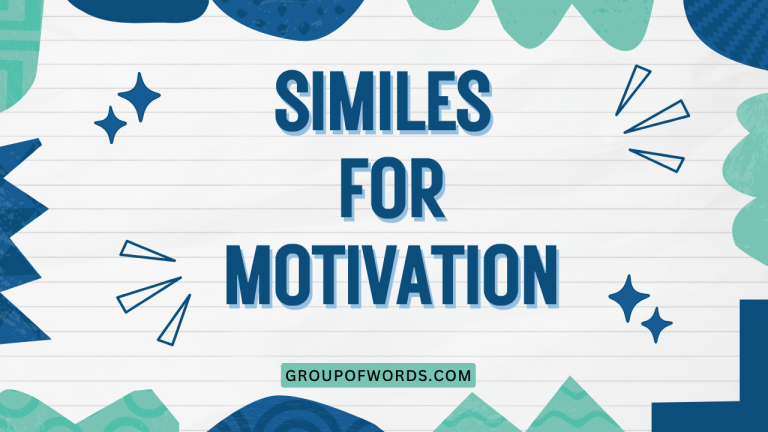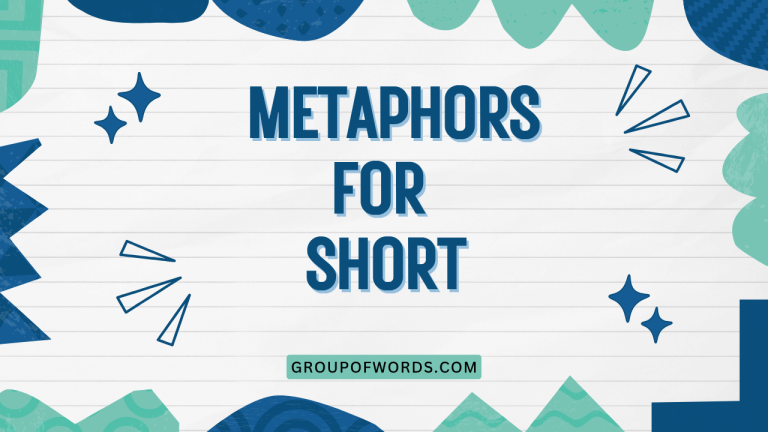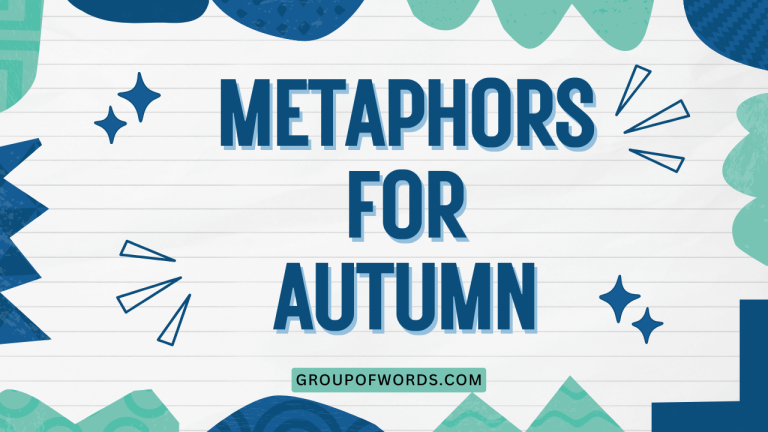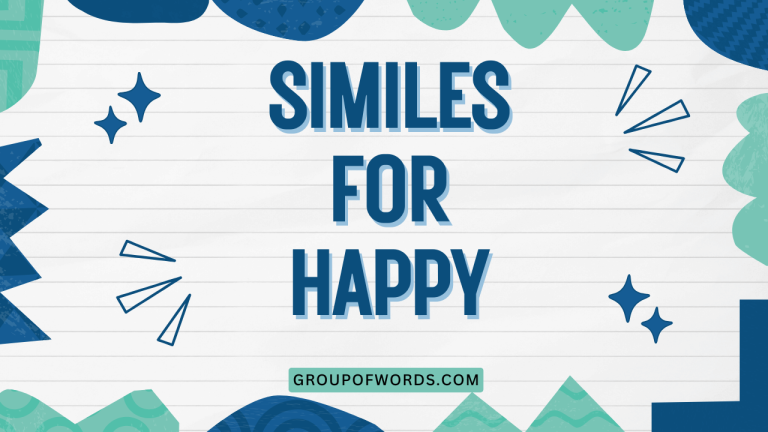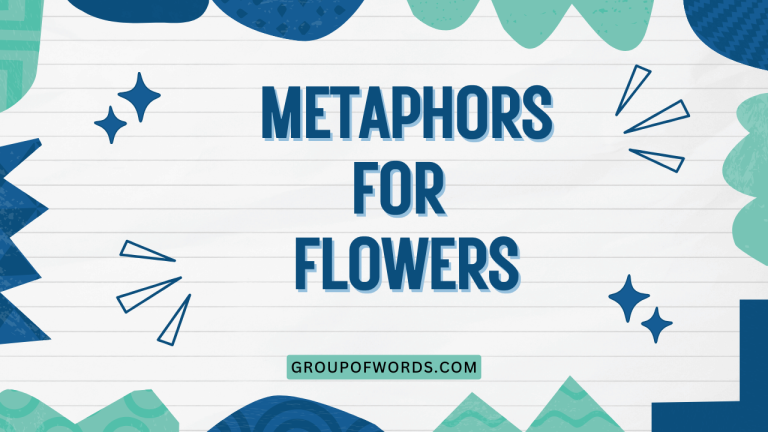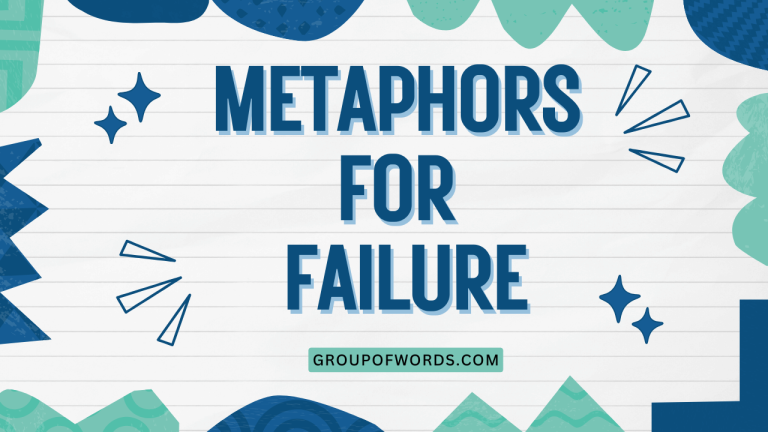Similes for Soft: Enhancing Your Descriptive Language
Similes are powerful tools in the English language that allow us to create vivid and engaging descriptions. Understanding and using similes effectively can greatly enhance your writing and communication skills.
This article focuses specifically on similes related to the quality of “softness,” exploring various comparisons and providing numerous examples to help you master this aspect of figurative language. Whether you’re a student, writer, or language enthusiast, this comprehensive guide will equip you with the knowledge and practice you need to confidently use similes for “soft” in your everyday expression.
By delving into the nuances of similes for softness, you’ll gain a deeper appreciation for the descriptive possibilities within the English language. This exploration will not only expand your vocabulary but also refine your ability to convey subtle textures and sensations.
The exercises and examples included are designed to solidify your understanding and encourage creative application of these similes in your writing and speech.
Table of Contents
- Definition of Simile and Softness
- Structural Breakdown of Similes for Soft
- Types of Softness and Related Similes
- Examples of Similes for Soft
- Usage Rules for Similes for Soft
- Common Mistakes When Using Similes for Soft
- Practice Exercises
- Advanced Topics: Nuances and Subtleties
- Frequently Asked Questions
- Conclusion
Definition of Simile and Softness
A simile is a figure of speech that compares two unlike things using the words “like” or “as.” It is a direct comparison, explicitly stating the similarity between the two things being compared. Similes are used to create vivid imagery, enhance understanding, and add color to language. They help the reader or listener visualize and connect with the description more effectively.
Softness, in its most literal sense, refers to the quality of being yielding to the touch; not hard or firm. However, “softness” can also be used metaphorically to describe qualities such as gentleness, mildness, or subtlety. Understanding the different dimensions of “softness” is crucial for choosing the most appropriate and impactful simile.
The function of similes is to add depth, clarity, and emotional resonance to writing and speech. By drawing comparisons to familiar objects or concepts, similes make abstract ideas more concrete and relatable.
In the context of “softness,” similes can help convey the specific texture, sound, light, or emotional quality being described.
Structural Breakdown of Similes for Soft
The basic structure of a simile is quite straightforward: A is like B or A is as [adjective] as B. In the context of similes for “soft,” A represents the subject being described as soft, and B represents the object or concept it is being compared to. The adjective modifies B to further refine the comparison.
Let’s break down the components:
- Subject (A): The noun or pronoun that possesses the quality of softness. (e.g., “The blanket,” “Her voice,” “The light”)
- Comparison Word: “Like” or “as.” These words explicitly signal that a comparison is being made.
- Object of Comparison (B): The noun or concept that embodies the quality of softness and is being used for comparison. (e.g., “cotton,” “a feather,” “a whisper”)
- Adjective (Optional): An adjective that modifies the object of comparison to further specify the type of softness being described. (e.g., “The blanket is as soft as new cotton.”)
Understanding this structure allows you to create your own similes for “soft” by selecting appropriate subjects and objects of comparison. The key is to choose objects that are widely recognized for their softness and that resonate with the specific aspect of softness you want to convey.
Types of Softness and Related Similes
Softness isn’t a monolithic concept; it manifests in various forms. Recognizing these nuances allows for more precise and evocative similes.
Softness to the Touch
This is the most literal and common understanding of softness. Similes in this category compare the texture of something to materials known for their gentleness against the skin.
Softness of Sound
This refers to quiet, gentle, and soothing sounds. Similes here often involve comparisons to whispers, breezes, or musical notes played at a low volume.
Softness of Light
This describes light that is gentle, diffused, and not harsh. Similes might compare it to moonlight, candlelight, or the glow of dawn.
Softness of Emotion
This refers to gentle, kind, and compassionate feelings. Similes in this category might compare emotions to a gentle breeze, a warm embrace, or a soothing balm.
Softness of Texture (Visual)
While related to touch, this describes textures that appear soft and inviting, even if not physically touched. Similes here often involve comparing the appearance of something to clouds, fur, or velvet.
Examples of Similes for Soft
The following sections provide extensive examples of similes for “soft,” categorized by the type of softness they describe. Each table contains numerous examples to illustrate the variety and flexibility of these comparisons.
Similes Describing Softness to the Touch
This table focuses on similes that evoke the feeling of softness when something is touched. These comparisons often involve materials like cotton, silk, and feathers.
| Subject | Simile |
|---|---|
| The baby’s skin | was as soft as a newborn chick’s down. |
| The blanket | felt like a cloud against my skin. |
| Her hair | was as soft as spun silk. |
| The cashmere sweater | was like a gentle caress. |
| The puppy’s fur | felt as soft as velvet. |
| The teddy bear | was as soft as a marshmallow. |
| The cotton balls | were like little puffs of heaven. |
| The freshly laundered towels | were as soft as a mother’s embrace. |
| The kitten’s paws | were as soft as rose petals. |
| The angora yarn | felt like a bunny’s ear. |
| The down pillow | was as soft as sleeping on a cloud. |
| The fleece lining | felt like being wrapped in a warm hug. |
| The old T-shirt | was as soft as my favorite memory. |
| The chamois cloth | felt like a gentle whisper on the car’s surface. |
| The velvet cushion | was as soft as a king’s throne. |
| The moleskin fabric | felt like stroking a smooth stone. |
| The lamb’s wool | was as soft as a baby’s breath. |
| The pashmina scarf | draped like a soft waterfall around her neck. |
| The brushed cotton sheets | were as soft as a summer breeze. |
| The worn leather gloves | felt as soft as a second skin. |
| The plush carpet | was as soft as walking on moss. |
| His beard, newly groomed | was as soft as a squirrel’s tail. |
| After the oil treatment, her hair | was as soft as melted butter. |
| The inside of the glove | felt like a bird’s nest. |
Similes Describing Softness of Sound
This table presents similes that capture the essence of quiet, gentle, and soothing sounds. These often involve comparisons to natural sounds or hushed tones.
| Subject | Simile |
|---|---|
| Her voice | was as soft as a whisper in the wind. |
| The music | sounded like a gentle stream flowing through the forest. |
| The rain | fell as softly as a lullaby. |
| His footsteps | were as soft as a cat’s paws on the carpet. |
| The leaves rustling | sounded like a hushed conversation. |
| The waves | lapped against the shore as softly as a sigh. |
| The baby’s cooing | was like a gentle melody. |
| The wind chimes | tinkled as softly as fairy bells. |
| The snow falling | was as silent and soft as a dream. |
| The distant church bells | sounded like a faint, comforting hum. |
| The owl’s hoot | was as soft as a question in the night. |
| The turning of the page | sounded like a butterfly’s wing. |
| The closing door | was as soft as a mouse’s breath. |
| The bubbling brook | sounded like a quiet giggle. |
| The lullaby | was as soft as a mother’s heartbeat. |
| The purring cat | sounded like a tiny motor humming contentedly. |
| The echo in the valley | was as soft as a memory. |
| The sigh of relief | was as soft as a feather landing on the ground. |
| The choir’s harmonies | blended as softly as colors in a watercolor painting. |
| The flute’s melody | was as soft as moonlight on water. |
| The sound of the harp | was like the gentle strumming of angels’ wings. |
| The pianist’s touch | was as soft as dew drops on a spiderweb. |
| The rustle of silk | sounded like a secret being whispered. |
Similes Describing Softness of Light
This table explores similes that describe light that is gentle, diffused, and not harsh. These comparisons often involve natural light sources like the moon and sun during specific times.
| Subject | Simile |
|---|---|
| The moonlight | was as soft as a silver veil. |
| The dawn | broke like a gentle blush across the sky. |
| The candlelight | flickered as softly as a firefly’s glow. |
| The lamp’s light | cast a glow as soft as a mother’s smile. |
| The sunset | painted the sky with colors as soft as watercolor. |
| The fog | diffused the light as softly as a dream. |
| The starlight | twinkled as softly as distant diamonds. |
| The fireflies | glowed as softly as tiny stars on the ground. |
| The light through the curtains | was as soft as a watercolor painting. |
| The morning sun | filtered through the leaves as softly as a blessing. |
| The light in her eyes | was as soft as a summer evening. |
| The light reflecting off the snow | was as soft as a whisper on the wind. |
| The lantern’s glow | was as soft as a promise in the dark. |
| The light in the cave | was as soft as a secret. |
| The light from the stained glass | was as soft as a prayer. |
| The light on the water | shimmered as softly as a mirage. |
| The sun on the horizon | burned as softly as a dying ember. |
| The light in her hair | was as soft as spun gold. |
| The light on the hills | lay as softly as a blanket. |
| The moon’s reflection | shone as softly as a ghost. |
Similes Describing Softness of Emotion
This table focuses on similes that describe gentle, kind, and compassionate feelings. These comparisons often involve natural elements or comforting sensations.
| Subject | Simile |
|---|---|
| Her compassion | was as soft as a gentle breeze. |
| His forgiveness | felt like a warm embrace. |
| Her words | were as soothing as a balm. |
| His kindness | was like a ray of sunshine on a cloudy day. |
| Her understanding | was as soft as a mother’s touch. |
| His empathy | felt like a comforting blanket. |
| Her patience | was as soft as a flowing river. |
| His love | was like a gentle rain nourishing the earth. |
| Her support | was as soft as a pillow to rest on. |
| His encouragement | felt like a gentle push in the right direction. |
| The memory of her smile | was as soft as a summer breeze. |
| His gentle correction | was as soft as a feather falling to the ground. |
| Her quiet strength | was as soft as the earth beneath our feet. |
| His comforting presence | was as soft as a lullaby. |
| Her acceptance | was as soft as the air we breathe. |
| His gentle humor | was as soft as a tickle. |
| Her quiet determination | was as soft as the steady flow of a river. |
| His unwavering belief in her | was as soft as a warm hand in hers. |
| Her silent understanding | was as soft as a shared secret. |
| His unspoken gratitude | was as soft as a gentle nod. |
Similes Describing Softness of Texture (Visual)
This table provides similes that evoke the visual appearance of softness, even without physical touch. These comparisons often involve objects with perceived soft textures like clouds, fur, or velvet.
| Subject | Simile |
|---|---|
| The clouds | looked as soft as cotton candy. |
| The snow-covered hills | appeared like a soft, white blanket. |
| The velvet curtains | looked as soft as a royal robe. |
| The fur coat | appeared like a cloud of warmth. |
| The moss | looked as soft as a green carpet. |
| The sand dunes | appeared like soft, rolling waves. |
| The petals of the rose | looked as soft as silk. |
| The freshly fallen snow | looked as soft as powdered sugar. |
| The down feathers | appeared like puffs of white smoke. |
| The angora sweater | looked as soft as a bunny’s fur. |
| The sheep’s fleece | looked as soft as a field of clouds. |
| The newly spun yarn | looked as soft as a spider’s web. |
| The ripened peaches | looked as soft as a baby’s cheek. |
| The surface of the lake | appeared as soft as polished glass. |
| The freshly baked bread | looked as soft as a golden pillow. |
| The light filtering through the leaves | looked as soft as a watercolor painting. |
| The morning mist | made the landscape look as soft as a dream. |
| The ripples in the water | looked as soft as the lines on a fingerprint. |
| The shadows in the forest | appeared as soft as velvet. |
| The light on the horizon | made the hills look as soft as a mirage. |
Usage Rules for Similes for Soft
While similes offer creative freedom, certain rules ensure clarity and effectiveness.
- Choose Appropriate Comparisons: The object of comparison (B) should genuinely embody the quality of softness you’re trying to convey. Avoid comparisons that are illogical or confusing.
- Consider the Audience: Choose comparisons that your audience will understand and relate to. A simile that relies on obscure knowledge will be ineffective.
- Avoid Clichés: While some common similes are effective, overuse can make your writing sound unoriginal. Strive for fresh and creative comparisons. “As soft as a baby’s bottom” is a common example to avoid.
- Maintain Consistency: Ensure the simile aligns with the overall tone and style of your writing. A highly formal simile might feel out of place in casual conversation.
- Use Sparingly: Overusing similes can make your writing feel forced and artificial. Use them strategically to enhance specific descriptions, rather than peppering them throughout your text.
A well-crafted simile can significantly enhance your writing, but a poorly chosen one can detract from it. Pay careful attention to the appropriateness and originality of your comparisons.
Common Mistakes When Using Similes for Soft
Even experienced writers can make mistakes when using similes. Being aware of these common errors can help you avoid them.
| Incorrect | Correct | Explanation |
|---|---|---|
| The rock was as soft as a feather. | The pillow was as soft as a feather. | Rocks are the opposite of soft. The comparison is illogical. |
| Her voice was as soft as a bulldozer. | Her voice was as soft as a whisper. | Bulldozers are loud, not soft. The comparison is inappropriate. |
| The light was as soft as light. | The light was as soft as moonlight. | This is redundant. It doesn’t provide a meaningful comparison. |
| His emotions were as soft as… I don’t know. | His emotions were as soft as a gentle rain. | The simile is incomplete. It needs a clear object of comparison. |
| The cloud was soft like a fluffy thing. | The cloud was as soft as cotton candy. | “Fluffy thing” is vague. The comparison needs to be more specific. |
Avoiding these common mistakes will help you write more effective and impactful similes.
Practice Exercises
Test your understanding of similes for “soft” with these practice exercises.
Exercise 1: Completing the Simile
Complete the following similes by adding an appropriate object of comparison.
| Question | Answer |
|---|---|
| 1. The kitten’s fur was as soft as _____. | 1. The kitten’s fur was as soft as velvet. |
| 2. Her voice was as soft as _____. | 2. Her voice was as soft as a whisper. |
| 3. The moonlight was as soft as _____. | 3. The moonlight was as soft as silver. |
| 4. His touch was as soft as _____. | 4. His touch was as soft as a feather. |
| 5. The blanket was as soft as _____. | 5. The blanket was as soft as cotton. |
| 6. The snow felt as soft as _____. | 6. The snow felt as soft as powder. |
| 7. Her smile was as soft as _____. | 7. Her smile was as soft as sunshine. |
| 8. The music was as soft as _____. | 8. The music was as soft as a lullaby. |
| 9. The clouds looked as soft as _____. | 9. The clouds looked as soft as cotton candy. |
| 10. His apology was as soft as _____. | 10. His apology was as soft as a gentle breeze. |
Exercise 2: Identifying Correct Similes
Identify which of the following sentences contain a correct simile for “soft.”
| Question | Answer |
|---|---|
| 1. The sandpaper was as soft as silk. | 1. Incorrect |
| 2. The pillow was as soft as a cloud. | 2. Correct |
| 3. The hammer was as soft as cotton. | 3. Incorrect |
| 4. The light was as soft as a whisper. | 4. Incorrect (relates to sound, not light) |
| 5. The baby’s skin was as soft as velvet. | 5. Correct |
| 6. Her anger was as soft as a feather. | 6. Incorrect |
| 7. The music was as soft as moonlight. | 7. Incorrect (relates to light, not sound) |
| 8. The scarf was as soft as cashmere. | 8. Correct |
| 9. The steel was as soft as a feather. | 9. Incorrect |
| 10. The dawn broke as soft as a sigh. | 10. Correct |
Exercise 3: Creating Your Own Similes
Create your own similes for “soft” based on the following subjects.
- A baby’s blanket
- The sound of rain
- The light of a candle
- A mother’s love
- A field of snow
(Answers will vary. Encourage creativity and originality while ensuring the similes are logical and appropriate.)
Advanced Topics: Nuances and Subtleties
For advanced learners, understanding the nuances and subtleties of similes for “soft” can elevate their writing to a new level.
Consider the context in which the simile is used. The same simile can have different connotations depending on the surrounding words and the overall tone of the piece.
For example, “as soft as a feather” can evoke feelings of comfort and peace in one context, but in another, it might suggest weakness or fragility.
Experiment with unusual or unexpected comparisons. While it’s important to choose comparisons that are logical and relatable, don’t be afraid to think outside the box.
A surprising simile can be particularly effective in capturing the reader’s attention and creating a lasting impression.
Pay attention to the rhythm and sound of your similes. The words you choose and the way you arrange them can affect the overall impact of the simile.
Read your similes aloud to ensure they flow smoothly and sound pleasing to the ear.
Finally, be mindful of cultural differences. What is considered “soft” in one culture may not be in another.
Consider your audience and choose comparisons that will resonate with them.
Frequently Asked Questions
- What is the difference between a simile and a metaphor?
A simile uses “like” or “as” to make a direct comparison, while a metaphor implies a comparison without using these words. For example, “Her voice was like velvet” (simile) versus “Her voice was velvet” (metaphor).
- Can a simile be too obvious?
Yes, overused or cliché similes can make your writing sound unoriginal and predictable. Strive for fresh and creative comparisons.
- How can I make my similes more effective?
Choose comparisons that are specific, relatable, and evocative. Consider the context and audience, and pay attention to the rhythm and sound of your similes.
- Is it okay to use similes in formal writing?
Yes, but use them sparingly and choose comparisons that are appropriate for the tone and style of the piece. Avoid overly casual or colloquial similes.
- How do I avoid using clichés when writing similes?
Brainstorm a list of possible comparisons before settling on one. Try to think of less common or more original ways to describe the quality you’re trying to convey. Consider the specific context and choose comparisons that are relevant and meaningful.
- What if I can’t think of a good simile?
Don’t force it. Sometimes, a direct description is more effective than a weak or contrived simile. You can also try using a different figure of speech, such as a metaphor or personification.
- Are there any words I should avoid when writing similes for “soft”?
Avoid words that are vague or overused, such as “thing,” “stuff,” or “very.” Also, avoid words that are associated with hardness or roughness, such as “rock,” “steel,” or “sandpaper.”
- How can I practice writing better similes?
Read widely and pay attention to the similes used by other writers. Experiment with different comparisons and ask for feedback from others. The more you practice, the better you’ll become at crafting effective similes.
Conclusion
Mastering similes for “soft” involves understanding the different types of softness, choosing appropriate comparisons, and avoiding common mistakes. By practicing the exercises and applying the usage rules outlined in this article, you can significantly enhance your writing and communication skills.
Remember that the key to effective similes is to be creative, specific, and mindful of your audience.
By integrating these techniques, you’ll be able to create vivid and memorable descriptions that resonate with your readers. Whether you’re describing the texture of a fabric, the sound of a voice, or the quality of an emotion, similes for “soft” can add depth and nuance to your writing.
Keep exploring, experimenting, and refining your skills to unlock the full potential of this powerful figure of speech. With consistent effort, you’ll be able to use similes for “soft” with confidence and artistry.
